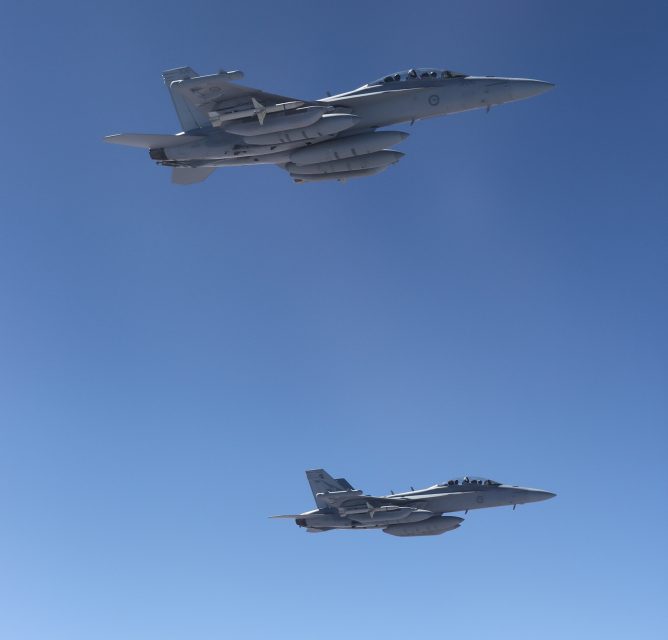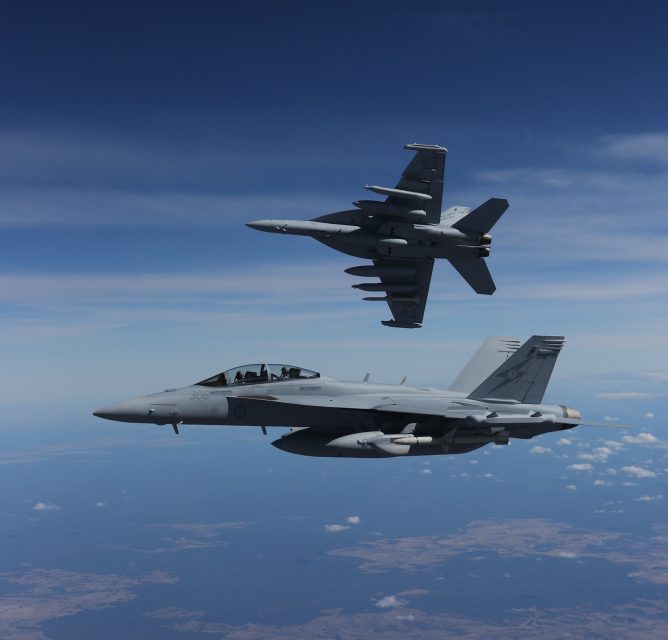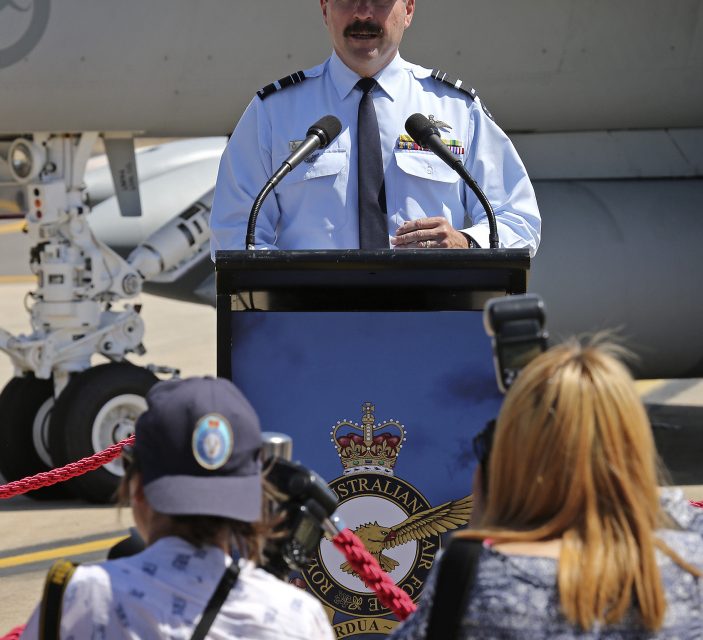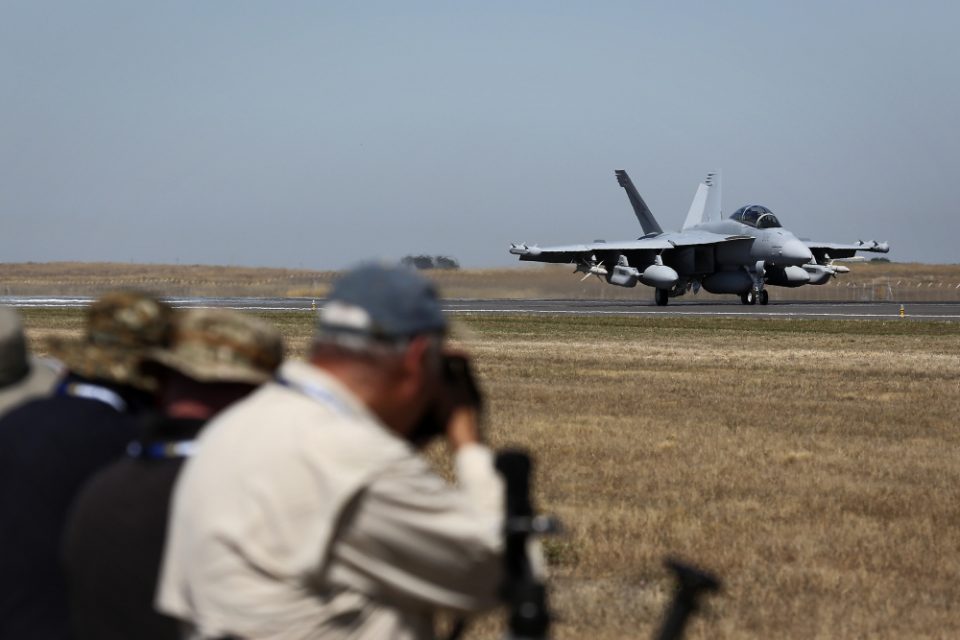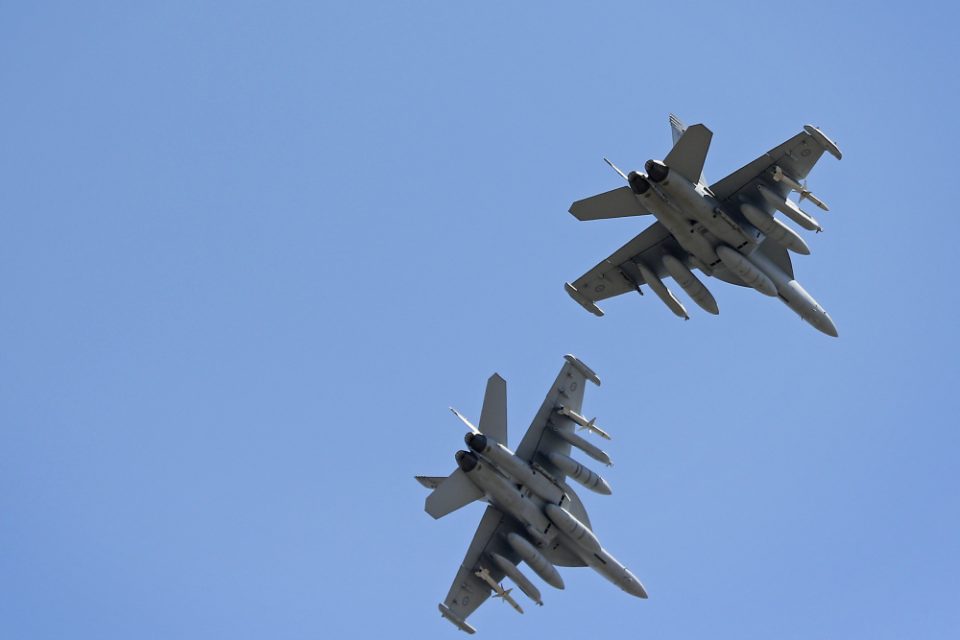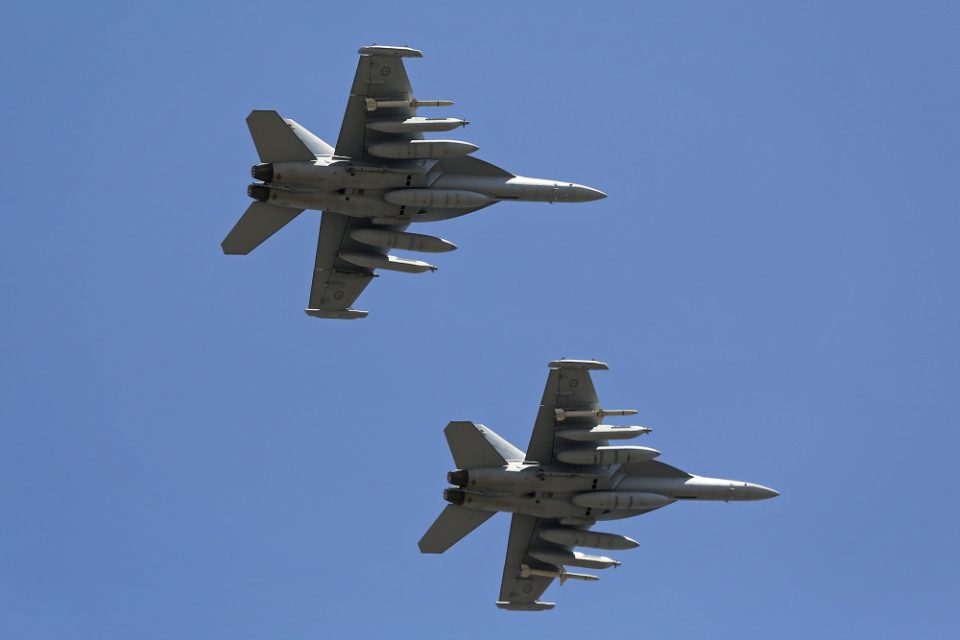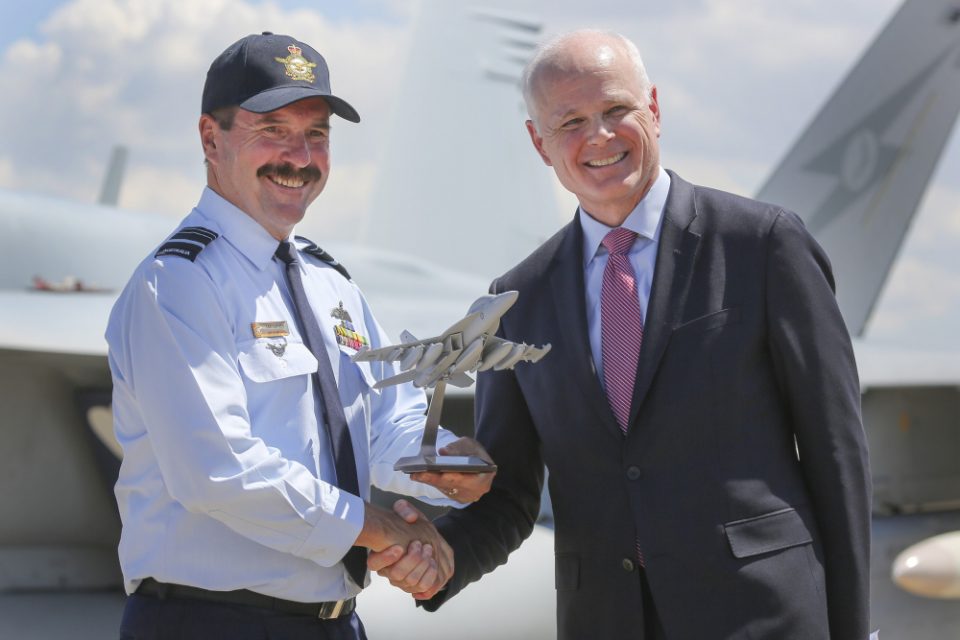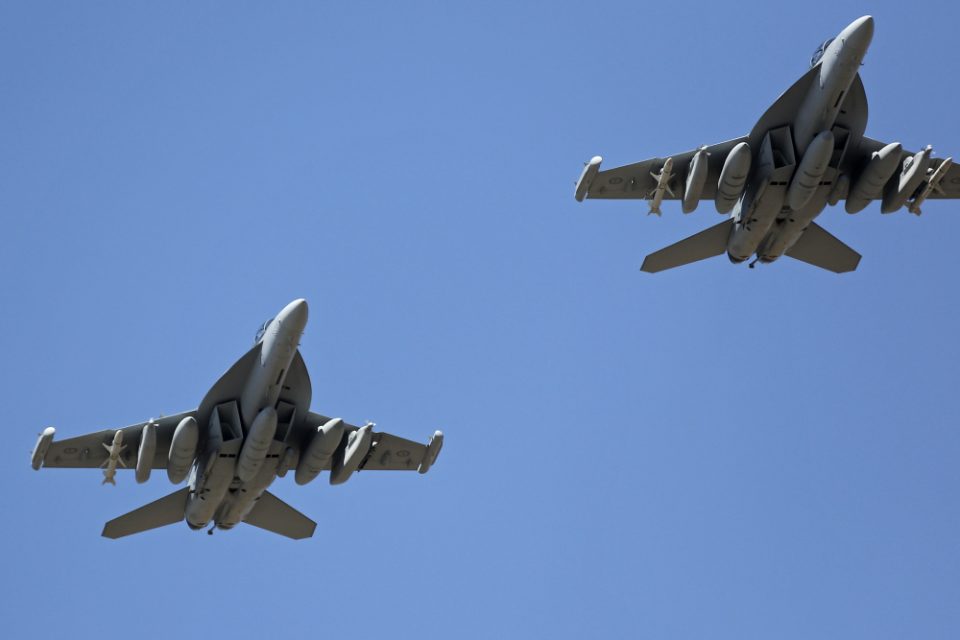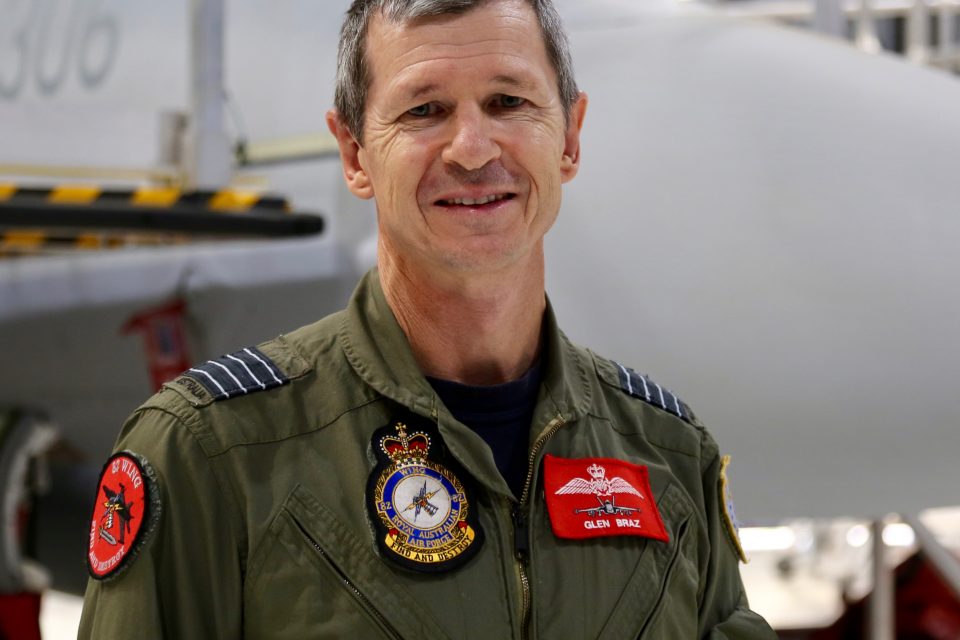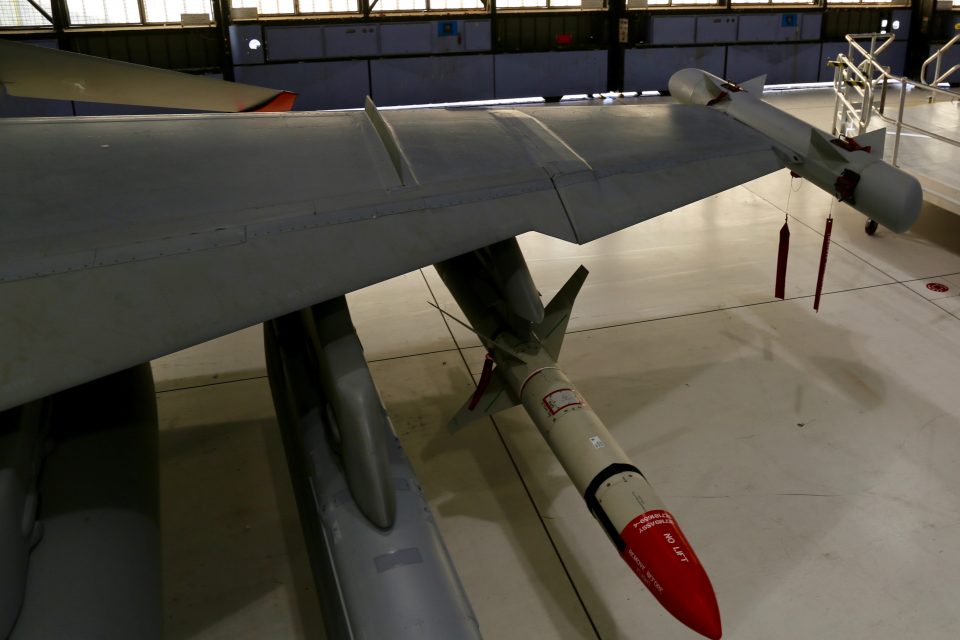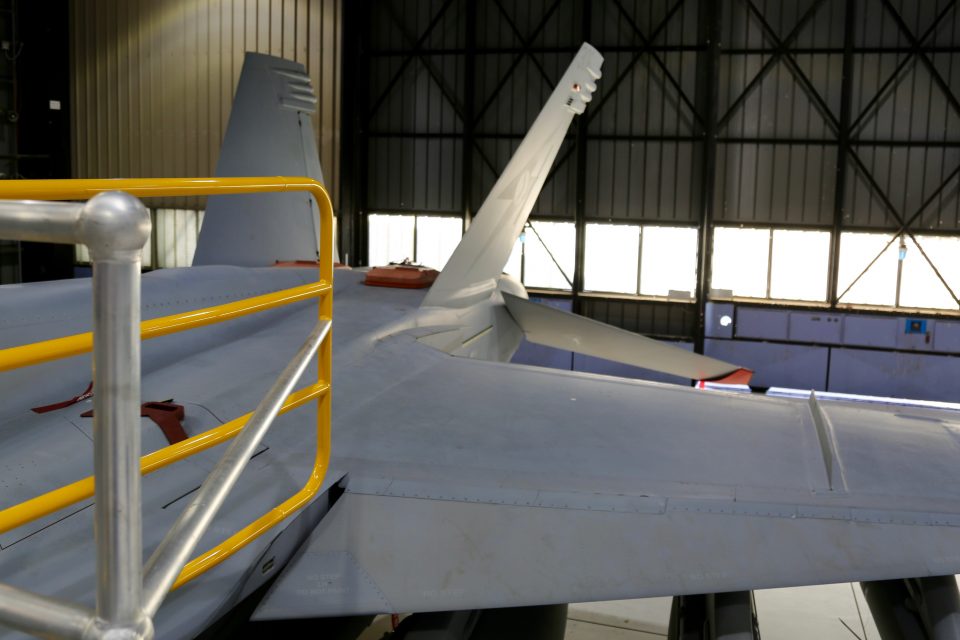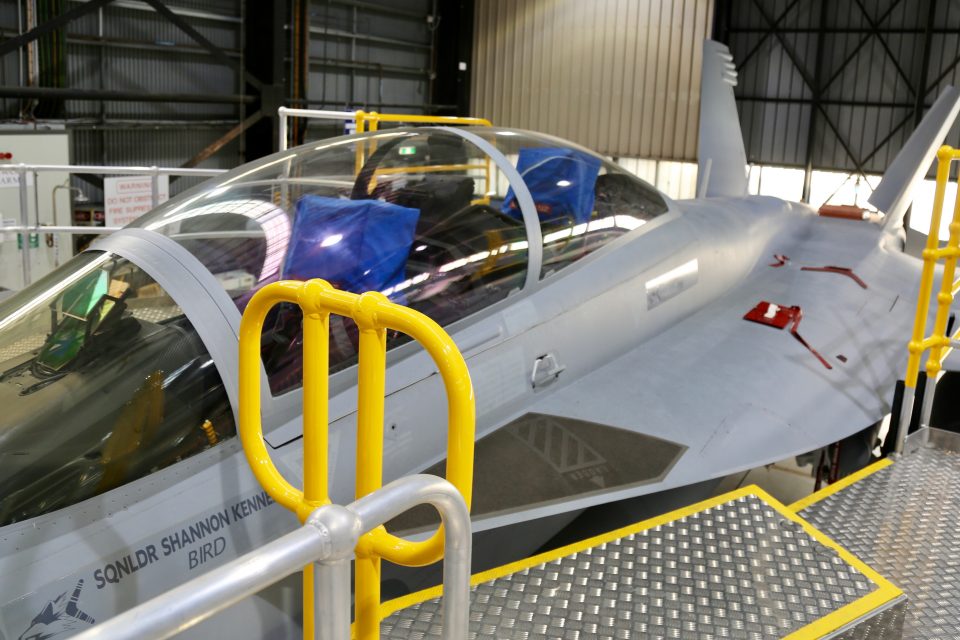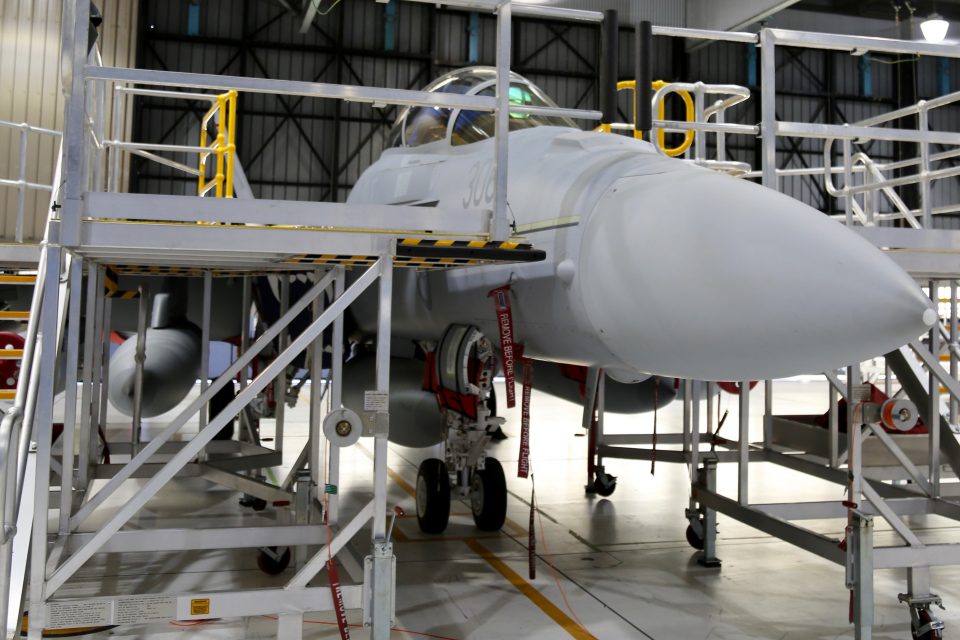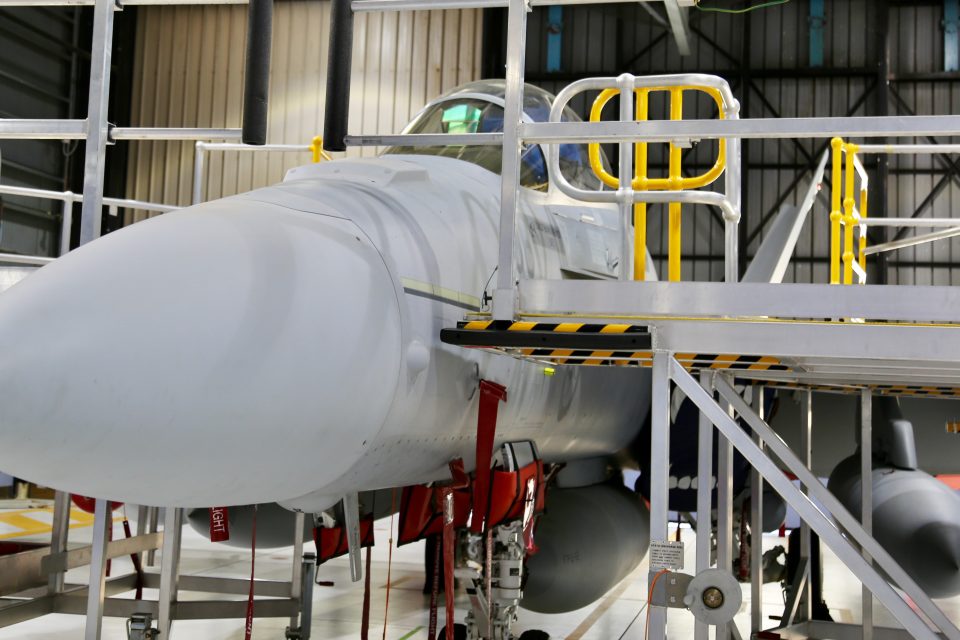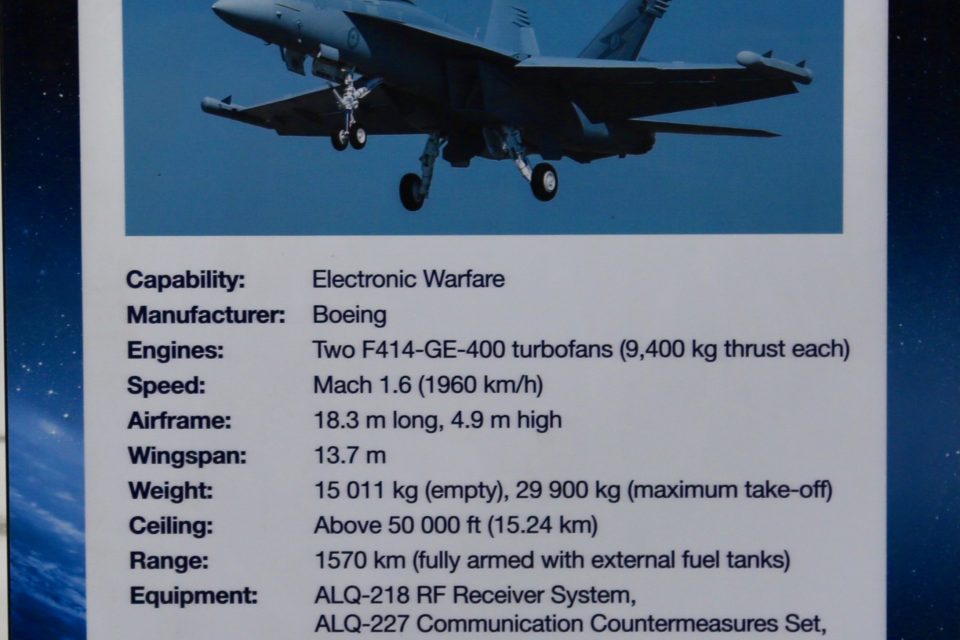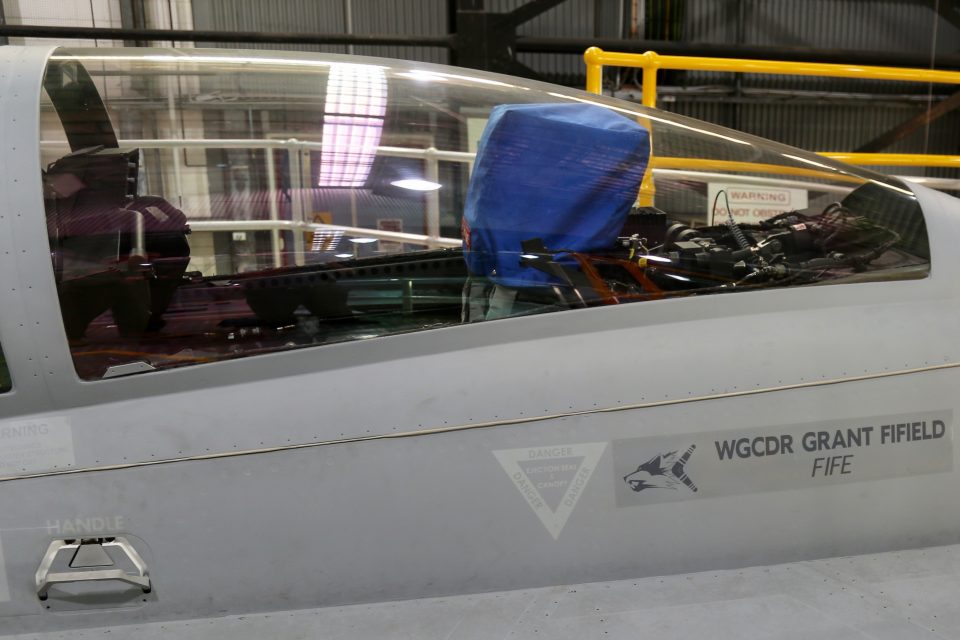2017-04-07 By Robbin Laird
During my visit to Amberley Airbase in Australia, I had a chance to talk with the 82nd Wing Commander, Group Captain Braz on April 3, 2017.
The Wing had been reorganized to include both Super Hornets and Growlers as the RAAF prepares for the fifth generation air combat transition.
Group Captain Braz has been in the RAAF for thirty years; originally he was an F-111 operator and then transitioned to Super Hornet, which was the RAAF selection of the aircraft to transition from the legacy aircraft (F-111) to the fifth generation aircraft (F-35).
He was one of the pioneers in that transition (the first commander of 1 Squadron when the Super Hornet came into the force) and now is part of the next one (as the F-35 comes into the force). In addition to many other postings and duties, he served as the Growler transition team leader in the RAAF headquarters for two years as well.
Question: Let us start with the challenge of transition. The Super Hornet was an important stimulus to change in the RAAF going from the F-111 to the Super Hornet, going from the mechanical to the initial digital age.
How disruptive was that transition?
Group Captain Braz: The Super Hornet was acquired to reduce risk with regard to our air combat transition.
We were operating the F-111, and we were the sole orphan operator of the F-111, an aging airframe with declining relevance. We knew the F-35, the new generation was coming but with uncertain timelines. And we had an aging classic Hornet fleet, which was starting to show more signs of its age.
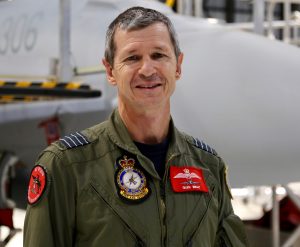 Group Captain Glen Braz, OC of the 82nd Wing.
Group Captain Glen Braz, OC of the 82nd Wing.
We realized that there was an opportunity to acquire a bridging fighter, the Super Hornet. And by acquiring this aircraft we began to address the security challenges associated with a data rich aircraft and to change our security culture and engage in the new operational concepts that the Super Hornet enabled.
It had capabilities that we’d never had to deal with before or think about before. While they’re not F-35s, they do generate inputs into rethinking about how to deal with the coming of the F-35.
The Super Hornet gave us that intellectual kick to think more broadly, and to adapt how we do things, and to not be wedded to historic approaches with regard to operating concepts.
Question: How many Growlers are coming to Australia?
Group Captain Braz: We’ve got four in Australia right now. By the end of the week, we should have seven, and we’ll have all of them here by June. We will have 12 in all.
Question: The Growler is coming when much is in flux with the RAAF with the significant impact of tanker and Wedgetail, and the coming of the F-35 as well P-8 to the force.
How does the coming of the Growler intersect with the broader changes for the RAAF?
Group Captain Braz: From an ADF force-wide point of view, there is a huge amount of change. That’s both a threat and an opportunity.
We’ve come to understand that we have to fight in the new information realm, and Growler allows you to do that more effectively.
Further, it changes how we are thinking about how we employ the existing capabilities with the new capabilities.
We’re reshaping our technical and operational thinking to harness and to capture what Growler can offer in the operational space.
It’s an opportunity while there is so much change to think wholesale about what we’re doing and how we do it, and to integrate it from that very ground floor level with those new capabilities that air force is bringing to enable the joint fight and to support the joint fight.
Question: In effect, you are shaping a community of tron warriors who operate specific platforms, but who will shape a broader community of users beyond the platform specific uses.
How do you view this shift?
Group Captain Braz: That is a good way to look at the process of change.
We are looking at ways to get the operators of specific platforms to cross-learn from each other, particularly as we add Growler, evolve Wedgetail, add P-8 and add F-35.
We’re also exporting our Growler experts into the wider joint environment, such as to our new Air Warfare Centre.
We used to have a very fighter-centric fighter combat instructor course.
Now this is changing under the influence of standing up the Air Warfare Centre and the Air Warfare Instructor Course.
Now we are focused on force integration.
We’ve integrated as best we could this year with the course that’s running right now, including wherever possible the Growler folks who have been in country on and off this year already.
Two EA-18G Growler aircraft arrive at Avalon for the 2017 Australian International Airshow. Credit: Australian Ministry of Defence
We’re tying in those other communities, the E-7, the ground-based air surveillance teams, the P-8 teams, the air mobility and tankers, because we see opportunity to shape a broader set of perspectives.
We are aiming to get the right integration mindset amongst the communities, which would enable us to take the team into new, and creative, innovative ways of operating.
We seek to bring technology more quickly on and off platforms. And we are doing so to find new ways to interact and to share information, and to create the web of options that will give us redundancy and resilience in our decision-making process.
Question: In effect, you are focusing on a 21st network of operators, rather than simply focusing on optimizing information flows.
And in that regard getting a small operator community onboard the Growler and then proliferating them in the crafting and evolution of a tron warfare community is what Growler for Australia is all about?
Group Captain Braz: That is a good way to look what we are about. We need to get the experience which Growler can deliver and share the knowledge.
The difficult thing with Growler is that it delivers non-kinetic effects, and sometimes they’re difficult to measure. We’re used to being able to deliver effects through other systems where the outcome is tangible and measurable.
For a Growler, if you’re attacking a threat system or the people operating that threat system, then often it’s difficult to truly assess how much you’re affecting that system.
You can do trials and tests in certain scenarios, but it’s never quite the same, and so you get a level of confidence about what immediate effect you can achieve, but it’s the secondary and tertiary effects that we’re often looking for that are sometimes harder to measure.
The difficult challenge will become knowing how degraded the network is and how reliable the information is at any given point.
If you create enough uncertainty in the operators, then you can achieve an effect even if it’s not degraded.
Question: Who are your initial customers in the ADF for the Growler produce?
Group Captain Braz: Clearly, the Joint Operations community, and special operations are key clients of interest. We are making sure that the Air Operations Center and the Joint Ops Command framework have appropriate access to Growler expertise.
Another joint customer is our Deployable Joint Force Headquarters, which is conveniently located here in Brisbane.
Question: Clearly, the Australian Army modernization approach is built around small engagement packages, which can have significant effect. Does not a Growler capability fight right into their mental furniture?
Group Captain Braz: It does. We know that a small force over a wide geographical area like Australia, we do need to be maximized in our lethality and our personal security, including force protection.
We need to make sure that we can have that relative advantage over our adversaries.
Growler gives us that opportunity to shape that role, not always being able to protect ourselves entirely from that attack from the potential adversary, but certainly to inflict similar pain upon them, and retain the relative advantage in decision superiority that gives our small force what it needs.
Question: What can be missed is how important cross learning is among the professional military working together as allies. I like to argue that if you want to make America great again, accelerate learning with allies.
This certainly applies to your area of work.
How would you describe your work as an Air Force officer with the US Navy?
Group Captain Braz: We couldn’t have done this without a huge commitment from the U.S. Navy. There’s simply no other way to describe that.
They have wanted us to be on this journey, and they have supported us wholeheartedly throughout it, both on what we do with the Growler training and the operational experience, the exchanges we’ve established, and how we prepare the team.
That’s furthered by exchange opportunities. We have U.S. Navy Growler aircrew joining us here, but we’ve also used folks connected to intelligence organizations and data management organizations and used U.S. Navy expertise in those areas to bring us along and further on the journey.
It’s no accident that when the Growler officially arrived in Australia at Avalon International Air Show a month or so ago, one of the four humans to step out of those two aircraft was a U.S. Navy aviator.
That was very deliberate, because we wanted both to recognize the amazing support we have had so far from the US Navy and the fact that we’re in this together.
It’s a partnership for the long term with cross learning on all sides.
Editor’s Note: The first slideshow highlights the arrival of the Growler at the 2017 Avalon Airshow and is credited to the Australian Ministry of Defence.
The second slideshow is based on photos made during the Second Line of Defense visit to Amberley on April 3, 2017.
For a look at the players in shaping the Australian-U.S. Growler/EW partnership, see the following:
“Ameri-Straya”: The Story of the People Behind the U.S.-Australian Partnership In Electronic Warfare
Aligning EW methodologies is an incredible asset to both Australia and the U.S. Aligning tactical know-how and EW methodology is critical to our shared interests, and it was imperative that Australia gain this knowledge. EW is unlike kinetic air-to-ground payloads that simply require target coordinates, or an air-to-air missile that needs an appropriate target.
It requires our sensors to call the signals the exact same thing, employ the exact same waveforms/payloads, and deliver at the exact same time with exact positioning. If we do not put the “right” payloads on the “right” target, we undo each other’s effects, degrade blue systems (called electromagnetic interference – EMI), or completely miss the target.
Simply put, having the same equipment is not enough. Mission effectiveness requires that we think alike, train alike, and speak the same EW language.
To achieve total alignment and close the “corporate knowledge gap,” the U.S. and RAAF established a personnel exchange program (PEP), to embed RAAF pilots and aircrew in operational U.S. Navy Expeditionary EA-18G squadrons.
In July of 2013, only three months after signing the FMS for twelve EA-18Gs, we ambitiously planned to start training aircrew in October of 2013 at the Fleet Replacement Squadron (FRS), with RAAF aircrew serving two year stints in deployable units by early 2014. This aggressive timeline represented the hardest path to traverse in our fledgling EW partnership.
Integrating RAAF aircrew into the FRS and then into operational VAQ units meant moving mountains. Mountains made from decades of cultural biases resisting the precise things we were trying to accomplish.
This meant assembling a team and working through painstaking details, dubbed “stubby pencil work” by one of the most vital and experienced active duty EW experts leading our team.
This is what I refer to as shaping a network of 21st century combat warriors who will take the technology into new directions and drive the code writing for the software upgradeable systems in ways to maximize combat effectiveness against a reactive enemy.
If one really wants to build out effective 21st century high intensity warfighting U.S. forces, it will be rooted in part on engaging with, learning from and learning with core allies.
Indeed as Todd Miller has noted: “What we are focused upon is a new way to look at what is often called burden sharing.
“Really it is about shaping a global deterrent with allies that “Pay to Play.”
“As we shape a 21st century deterent force, the whole can be exponentially bigger than the sum of the parts.”
And it is clear that the F-35 global enterprise and the P-8 partnership among the US, Australia, the UK and Norway are clearly new ways to shape how to build an effetive global deterrent force.
There are other examples as well in which the Australians are involved, notably the KC-30A global fleet of advanced tankers.
It is about shaping a new way to look at user groups from beyond simply supporting a single platform to positioning oneself to leverage that experience to participate in a broader effort to shape an integrated combat force able to engage in high intensity operations.
From that perspective, the RAAF is introducing the Growler into the RAAF as part of its learning process on shaping broader non-kinetic effects.
They have as well and organized their residual Super Hornets and Growlers into the same Wing based at Amberley Airbase, 82nd Wing.
But it is clear that with Wedgetail already in the force and P-8s and F-35s on their way, Growler will be part of a broader community of warfighters shaping a way ahead in Tron Warfare on more broadly on shaping the evolving con-ops for non- kinetic effects.



